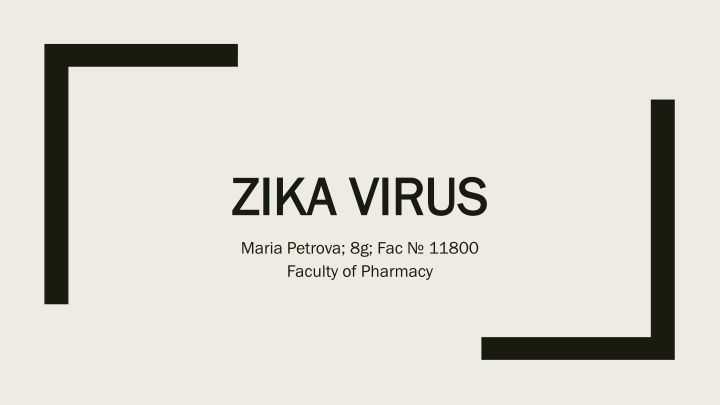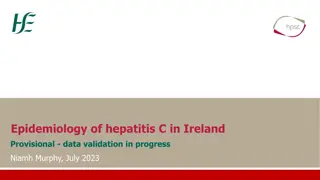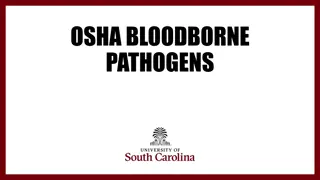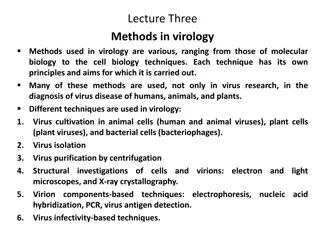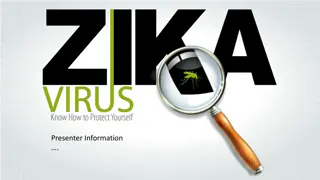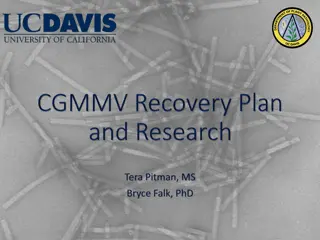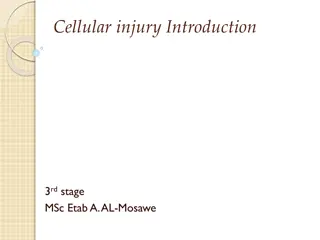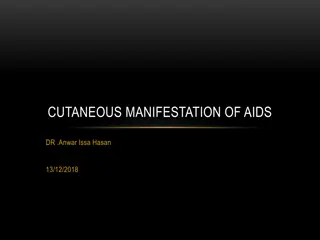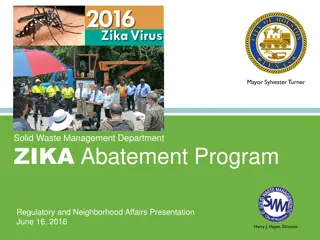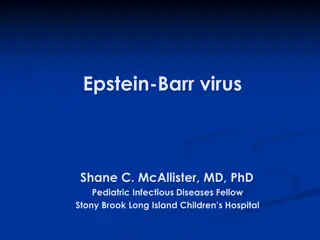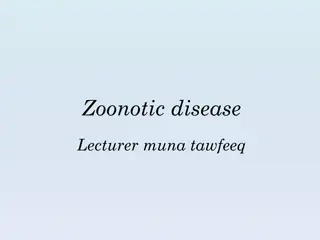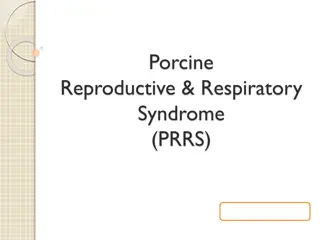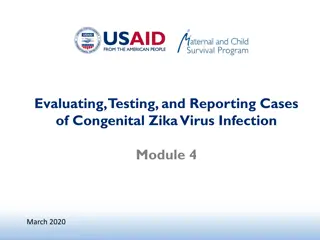Zika Virus: Epidemiology, Transmission, Clinical Manifestations
Zika virus, a positive-sense RNA flavivirus, was first isolated in 1947 and has various modes of transmission including mosquito-borne, blood transfusion, and maternal-fetal. Clinical manifestations range from asymptomatic to severe neurological complications. Diagnosis is through nucleic acid and serologic testing. Treatment involves supportive care and prevention strategies such as abstinence or protected sexual intercourse. Lessons learned from the pandemic highlight the need for increased awareness and support in low- and middle-income countries.
Download Presentation

Please find below an Image/Link to download the presentation.
The content on the website is provided AS IS for your information and personal use only. It may not be sold, licensed, or shared on other websites without obtaining consent from the author.If you encounter any issues during the download, it is possible that the publisher has removed the file from their server.
You are allowed to download the files provided on this website for personal or commercial use, subject to the condition that they are used lawfully. All files are the property of their respective owners.
The content on the website is provided AS IS for your information and personal use only. It may not be sold, licensed, or shared on other websites without obtaining consent from the author.
E N D
Presentation Transcript
ZIKA ZIKA VIRUS VIRUS Maria Petrova; 8g; Fac 11800 Faculty of Pharmacy
CONTENTS OF THIS PRESENTATION CONTENTS OF THIS PRESENTATION Epidemiologic Features Transmission Clinical Manifestations Diagnosis Treatment and Prevention
Epidemiologic Epidemiologic Features Features ZIKV is a positive-sense RNA flavivirus in the family Flaviviridae. ZIKV was first isolated in 1947 in the Zika Forest in Uganda. ZIKV migrated to Asia. The ZIKV pandemic was an example of a perfect storm .
Transmission Transmission Mosquito-borne transmission; Blood transfusion; During sexual contact; Maternal fetal transmission.
Clinical Clinical Manifestations Manifestations The majority (50 to 80%) of ZIKV infections are asymptomatic. Symptomatic ZIKV infection manifests as a rash, low-grade fever, arthralgia and myalgia, and conjunctivitis. Complications are severe and may be fatal. The striking feature of the clinical manifestation is the neurologic complications.
Diagnosis Diagnosis Nucleic acid testing; Serologic testing; A positive nucleic acid test shows the presence of ZIKV RNA but does not necessarily indicate the presence of infectious virus.
Treatment Treatment and and Prevention Prevention In vitro; Supportive care; Abstinence or protected sexual intercourse; Avoidance of infection during pregnancy or postponement of pregnancy.
Conclusions Conclusions Lessons Learned from Lessons Learned from the Pandemic the Pandemic The pandemic increased positive awareness about critical social justice issues. The virus still poses a public health threat. There is a critical need to mobilize support and improve capacity in low- and middle-income countries.
THANK YOU FOR YOUR ATTENTION!
